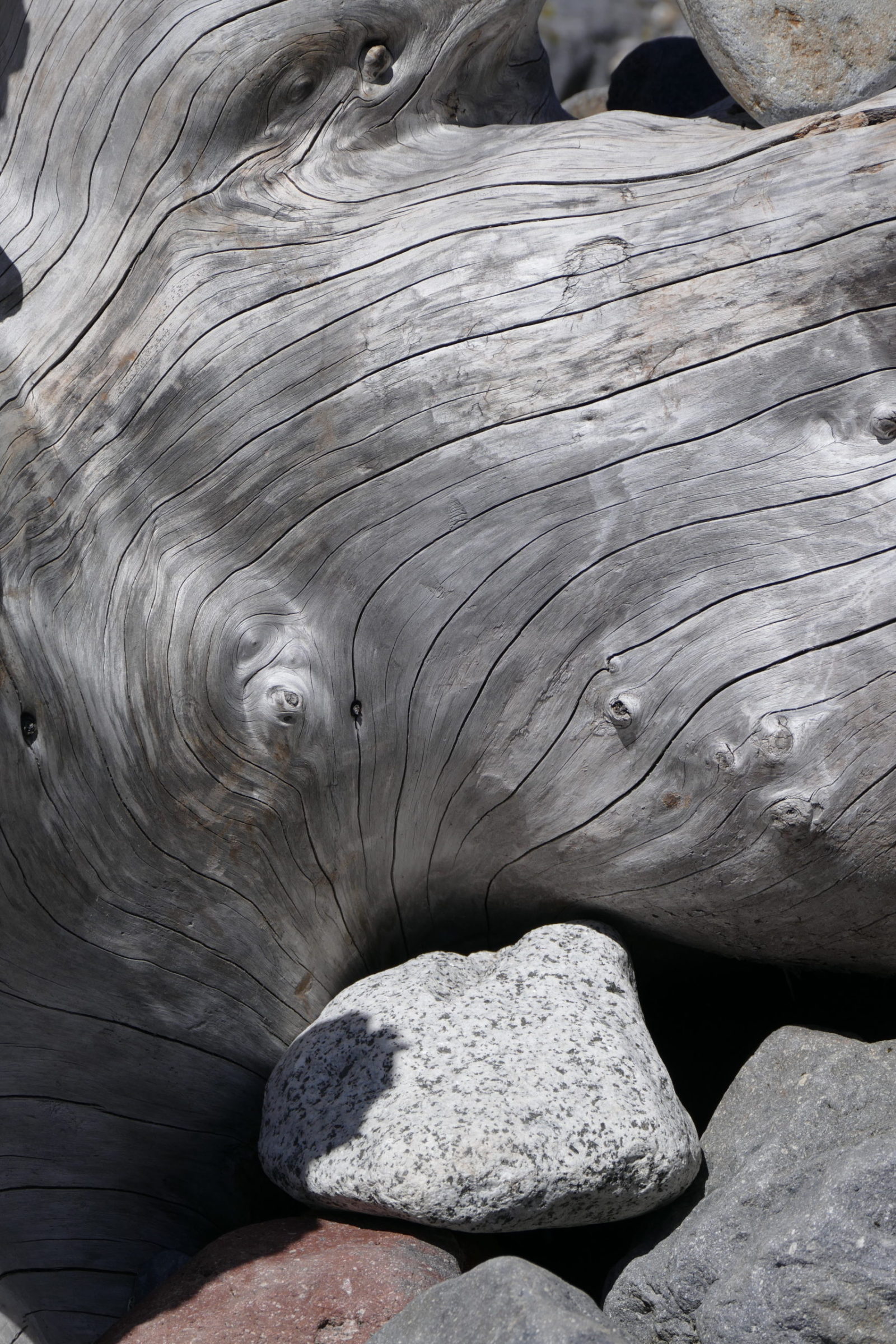On 9 June 2015 the relevant part of the glacier and snowmelt-fed riverbed was bone dry.
But when the river rages, it uproots mighty trees, carries them for a while, then dumps them
Then, over many years, the consistently shifting, ever-swelling/shrinking river transforms their “skeletons”.
(photo copyright Doug Spencer)
At 4,392 metres above sea level Washington State’s Mount Rainier is the Cascade Range’s highest peak.
One of the world’s more topographically prominent peaks, Rainier utterly dominates the surrounding landscape.
Seattle is 95 kilometres away, but if you have ever been in Seattle on a clear day, you know why city residents refer to Rainier simply as “the mountain”.
Rainier’s glaciers are retreating rapidly, but this ginormous (not extinct) volcano is still, by far, the most heavily glaciated mountain in the USA’s “lower 48” – its non-Alaskan states.
It is also, potentially, one of the world’s more lethal volcanoes – far more dangerous than Mount St Helens, as explained here
—
Today’s music is not an ode to Mount Rainer, nor to freshwater driftwood carried by mountain streams.
It is, however, appropriate, given its beauty/grandeur, and it was composed by someone who was raised within sight of the Cascade Range.
Jim Pepper 1941-92) was born in Salem, Oregon, his Pacific Northwest state’s capital city.
A capable jazz saxophonist, Pepper was a Native American of Kaw and Creek heritage.
Encouraged by Ornette Coleman and Don Cherry, Pepper decided to address his heritage, musically
He sometimes did so with a keen political edge; his Custer Gets It quotes a Kaw war dance, then explodes into a “freejazz” maelstrom.
Click here for a perceptive, non-hagiographic appreciation of Pepper’s music and his troubled, too-short life.
Jim Pepper is now not widely remembered, but he is among the few adventurous jazz instrumentalists ever to have penned a hit.
His is also the only Billboard pop charting number to incorporate an authentic Native American chant.
Pepper based his Witchi-Tai-To on a Comanche peyote chant which he learned from his grandfather.
It has been recorded by many artists, across diverse genres and skill levels, vocally and/or instrumentally.
This post presents my two favourite versions….
On their 1978 LP Out of the Woods the original quartet version of Oregon delivered this:
(Collin Walcott played sitar, tabla, congas and cymbals. Ralph Towner played 12 string guitar and piano. I think Paul McCandless was mostly playing oboe, then shifted to English horn at the end. Glen Moore played bass)
Another sublime – and very different – version was recorded late in 1973 by a Scandinavian quartet, jointly led by Norwegian saxophonist Jan Garbarek and Swedish pianist Bobo Stenson.
Witchi-Tai-To was titlepiece of their 1974 ECM release, which is sill available, and worth seeking.
Swedish bassist Palle Danielsson and Norwegian drummer Jon Christensen were indeed the only other players, this video’s misleading “flag” notwithstanding.
…and if you are game, here is Jim Pepper’s original recording of a number that did not enter the pop charts:
